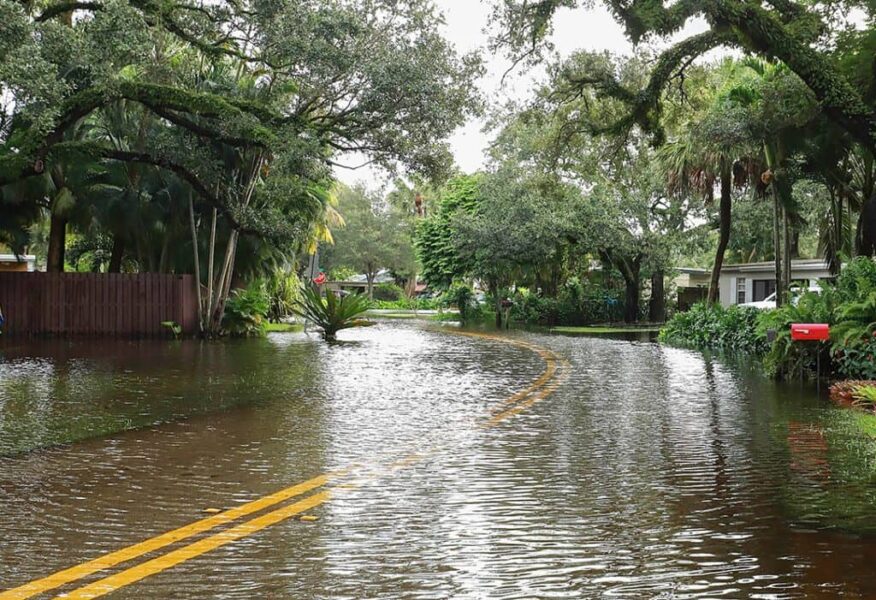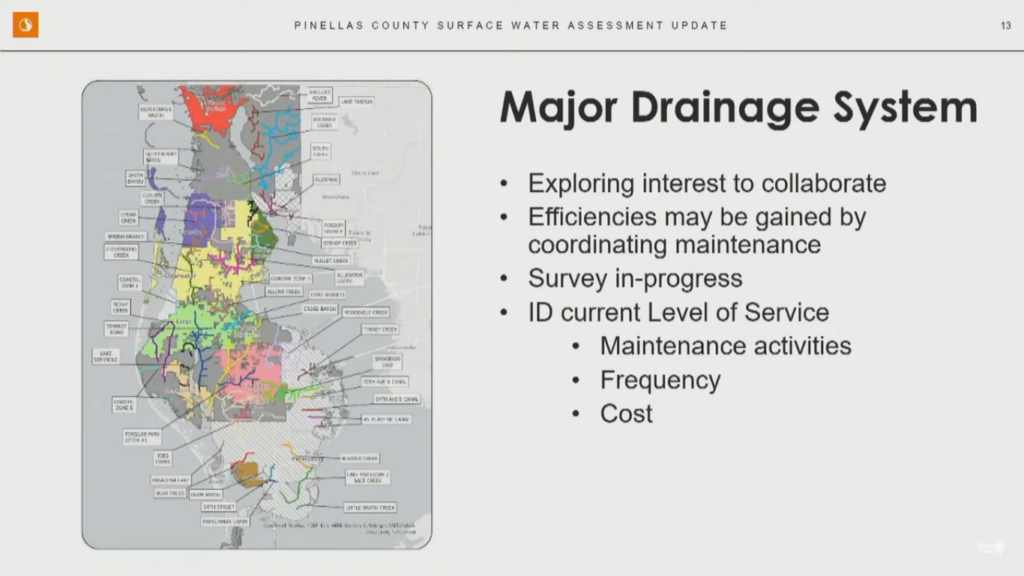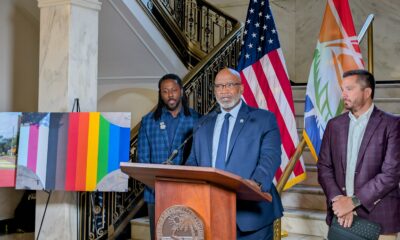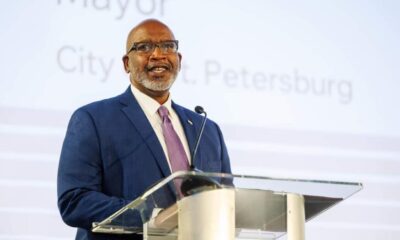Thrive
County surface water program faces extensive funding gap

Pinellas County officials are considering raising surface water assessment rates by 12% or borrowing millions from other initiatives to cover increasing operational costs and keep the program afloat.
Engineering firm Stantec found the surface water program faces an average $3.5 million annual funding gap over the next nine years. County commissioners and administrators discussed the evaluation’s initial findings and potential solutions at a Feb. 29 work session.
Program funding covers operational, maintenance and minor capital improvement costs, like replacing aging drainage pipes throughout the county. Kelli Levy, public works director, said the current service level is not sustainable – before accounting for more stringent state stormwater requirements.
“Every corrugated metal pipe in our right of way is well beyond its lifecycle of about 25 to 30 years,” Levy said. “To be frank, our inventory grows as we find new stuff out there. We’re an older, developed community …”
Levy said the program has met or exceeded the commission’s expectations since it launched in 2014. She credited efforts to increase operational efficiencies and maximize the county’s return on investment.
Levy said grant funding and interlocal agreements with municipalities, including a water quality monitoring program, reduced costs “for everyone.” The City of St. Petersburg participates in several of those initiatives and is also working to upgrade its stormwater systems.
Kelly Westover, managing consultant at Stantec, said the average annual surface water assessment was $116 when the program launched a decade ago. Commissioners approved a 1.5% increase in fiscal year 2018.
“We didn’t do any (rate) increase for five years,” said Commissioner Charlie Justice. “Because we didn’t do that, we haven’t kept up …”

A map of Pinellas County’s drainage systems. Officials hope to increase operational efficiency through collaborating with municipal partners. Screengrab.
Westover said the average annual bill is now $121, a five-dollar increase over 10 years. She noted that the program would accrue $21.8 million this year, $2.2 million under the estimated $24 million in expenditures.
That funding gap will increase alongside inflation, personnel and material costs. “You do have an older system that’s aging,” Westover added. “There’s a component that requires rehabilitation and replacement of that aging infrastructure.”
In addition, Westover said new state stormwater system requirements would soon “place additional pressure” on operations and maintenance. Levy said the assessment benefits the entire area as “you can’t drive away from your neighborhood down the street if that drainage system isn’t functioning and keeping the water off the road.”
Westover told commissioners they would exhaust their reserve funding by fiscal year 2026 at the current rate. The first solution is a 12% hike in 2025, followed by 4% annual increases through 2033.
Incrementally raising rates would require the county to reallocate money. A 5% increase through fiscal year 2028 would still result in a $3.85 million funding gap.
The county funds larger stormwater capital improvement projects through Penny for Pinellas taxes. Westover said many cities are also raising stormwater fees to account for aging infrastructure, rising costs and increasing environmental resiliency issues.
“We recommend an annual 4% indexing, regardless of what you do in the near term, to keep up with that inflationary pressure,” she added.
Stantec is also conducting a survey regarding an extensive drainage system that spans the county. Westover said the firm is asking city officials to collaborate on maintenance efforts, like clearing vegetation and removing sediment.
She expects to complete the survey next month and bring the results to the commission in June. When asked when the commission must decide on rate increases, County Administrator Barry Burton said, “The sooner, the better.”
“It’s not going to get better with time,” Burton said. “If we continue to do what we’ve done in the past, slowly things break. We talk about roads and stuff a lot – this is just as important.”
He explained that borrowing from the Solid Waste Fund would accrue interest. Burton said there is no ideal funding source, as reallocating money would delay other projects.
While he noted that a 12% hike could create sticker shock, it only represents a $14.55 average annual increase. “Is it better to rip the Band-Aid off rather than borrowing?” Burton asked.
Several commissioners said they preferred incremental increases over an extended period. “It’s just psychologically – right now, people are hurting,” said Commissioner Dave Eggers.
Burton said administrators would continue discussing and presenting options in the coming months. He also stressed that not completing necessary upgrades would “cost us more in the long run.”







